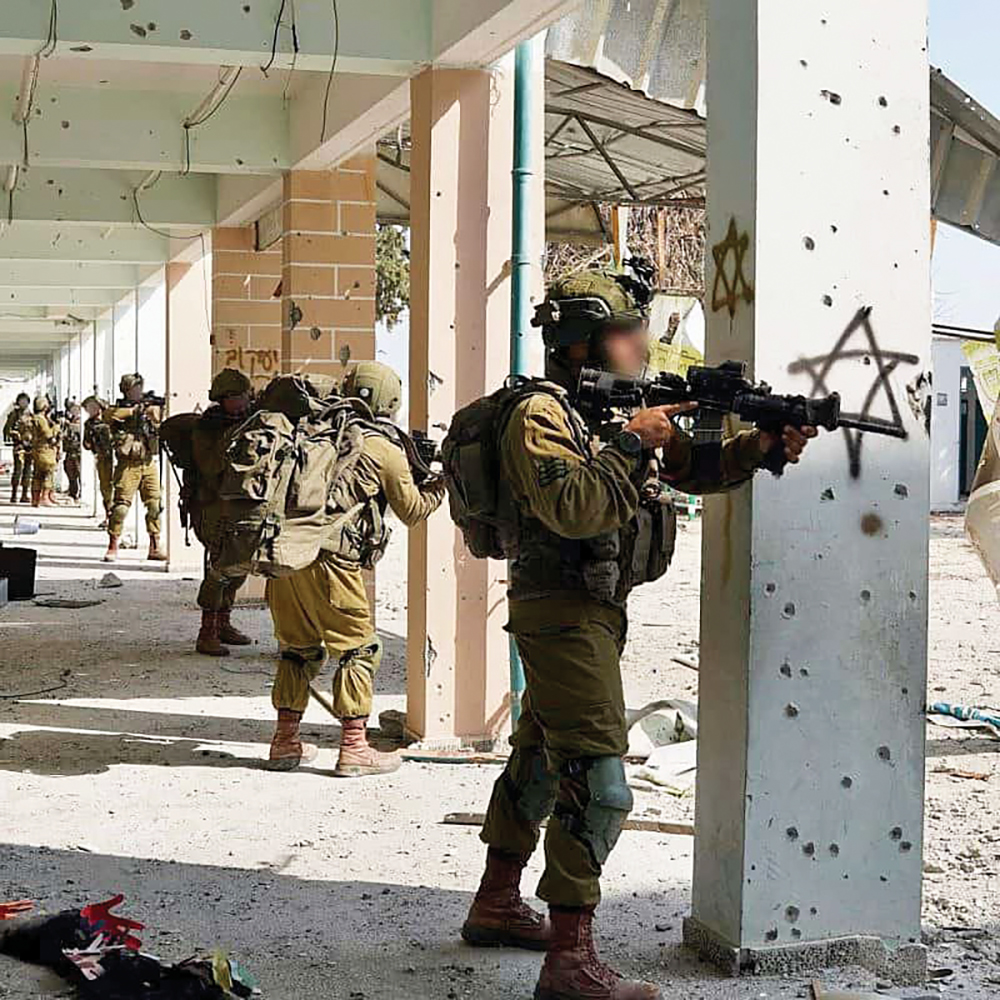
Ismail Haniyeh, the Doha-based leader of Hamas’s “political” wing, on Wednesday, Feb. 28 urged the Iran-led “Axis of Resistance” to step up attacks on Israel during Ramadan, calling for a “broad and international movement to break the siege on Al-Aqsa mosque” in Jerusalem.
“Any flexibility in negotiations, out of concern for the blood of our people, is matched by a readiness to defend it,” Haniyeh said in a speech, referring to ongoing talks for a ceasefire deal with Israel.
The “Axis of Resistance” includes Hamas, Hezbollah, Islamic Jihad, the Houthis and other Iranian-backed terrorist groups in the Middle East.
In his speech, the terror leader also called on Palestinians in Jerusalem, Yehuda and Shomron to storm the Al-Aqsa mosque on the Temple Mount on the first day of Ramadan, which falls around March 10 this year.
Haniyeh’s comments came a day after Israeli Defense Minister Yoav Gallant warned that terrorist groups are plotting to increase their violent attacks on the Jewish state under the guise of Ramadan.
Iran-backed terror groups are plotting to turn the Islamic holy month of Ramadan into the “second phase of Oct. 7” and set the Middle East on fire, Israeli Defense Minister Yoav Gallant charged on Tuesday.
“The main goal of Hamas is to take Ramadan, with an emphasis on the Temple Mount and Jerusalem, and turn it into the second phase of their plan that began on October 7. This is the main goal of Hamas, and it is being amplified by Iran and Hezbollah,” Gallant said following a situational assessment at the Israel Defense Forces’ Central Command, which is responsible for Yehuda and Shomron.
“We must not give Hamas what it failed to achieve during the beginning of the war and [let it achieve] ‘unity of the battlefields,”” he added, in reference to the terrorist group’s attempts to spark a multi-front war.
Yehuda and Shomron saw a dramatic rise in terrorist attacks in 2023 compared to the previous year, with shootings reaching their highest level since the Second Intifada of 2000-05, IDF data shows. The violence has continued to escalate in the months since Hamas started a war with its murderous rampage across the northwestern Negev on Oct. 7.
In his speech on Wednesday, Haniyeh charged that “the occupation [i.e. Israel] and its partner, the United States,” are attempting “to achieve through political machinations what they did not achieve in combat.”
Israel’s War Cabinet on Saturday approved the travel to Qatar in the coming days of a delegation to continue ceasefire-for-hostages talks, after “significant progress” was reported in Paris over the weekend.
The Friday and Saturday meetings built on last month’s initial gathering in the French capital as well as intermittent talks in Cairo aimed at realizing a proposal to free the remaining 134 Israelis being held by Hamas in exchange for an extended pause in the war.
The parties reportedly want to close the deal in the next two weeks, ahead of the start of Ramadan.
However, Army Radio on Wednesday reported that Hamas derided the proposed outline as “a Zionist document” and objected to the fact that it did not call for a permanent end to the IDF operation in Gaza, among other demands made by the terrorist group.
The U.S.-drafted proposal reportedly provides for a six-week pause in fighting, during which Hamas would free some 40 hostages in exchange for approximately 400 Palestinian terrorists jailed in Israel.
The violence has continued to escalate in the months since Hamas started a war with its murderous rampage across the northwestern Negev on Oct. 7. A total of 41 Israeli airstrikes have been carried out in Yehuda and Shomron since the start of the war, as well as more than 200 counterterror operations in Palestinian towns.
Since Oct. 7, around 3,250 Palestinian terror suspects have been captured in arrest raids throughout Yehuda, Shomron and the Jordan Valley, including more than 1,350 who are associated with Hamas, the IDF said Tuesday.
In the Gaza Strip, IDF forces are closing in on the position of Hamas terror leader Yahya Sinwar, The Washington Post reported on Tuesday, citing current and former Israeli officials familiar with the intelligence.
Sinwar is believed to be hiding in the vast tunnel systems underneath the southern Gaza city of Khan Yunis, where he has reportedly surrounded himself with a large number of living hostages, the officials confirmed.
“It’s not about locating him, it’s about doing something” without risking the lives of the hostages, one senior Israeli official told the newspaper.
However, the operation in Gaza cannot conclude until Sinwar is captured, killed, or removed from power, officials stressed to The Washington Post.
Speaking at a World Zionist Organization conference in Jerusalem on Tuesday, IDF Spokesperson Rear Adm. Daniel Hagari vowed to get to Sinwar “dead or alive.”
“We are fighting Hamas from the north to the south,” Hagari told attendees. “We will finish in Rafah; it is an important city—there are hostages in Rafah,” Hagari was quoted as saying. The city of Rafah is the last Hamas stronghold in Gaza and could be the key to ending the war.
Last month, the army launched a massive assault in Khan Yunis, killing scores of terrorist operatives, including company commanders. During previous operations in Khan Yunis that took place in the first weeks of the Gaza offensive, more than 300 tunnels had already been located.
Soldiers of the Maglan and Egoz commando units continue to operate in the western part of the city, the IDF revealed on Tuesday, noting that troops are killing and arresting “dozens” of Hamas terrorists every day.
In Khan Yunis, troops found loaded weapons under beds in civilian homes, as well as rockets, grenades, launchers, explosive belts, shoulder missiles and other terror equipment.









